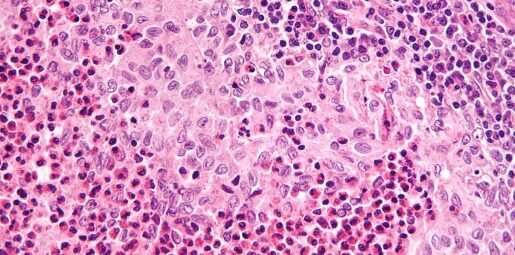
Langerhans cell histiocytosis (LCH) is a rare cancer involving dendritic cells, a type of white blood cell that usually helps defend against infections. The current standard of care for LCH, chemotherapy, cures fewer than half of patients.
“Our research team focuses on identifying the causes of LCH so that we can develop better therapies for patients,” said Dr. Rikhia Chakraborty, assistant professor of pediatrics—hematology and oncology at Baylor College of Medicine.
Most cells in LCH lesions are not abnormal dendritic cells but other invading immune cells, such as T cells, that are recruited to sites of disease. The contribution of T cells and other immune cells to LCH disease is not known. Chakraborty and her team at the Texas Children’s Cancer Center Histiocytosis Program characterized the types of immune cells in LCH lesions and the activity of those cells.
“We wanted to understand the composition of the immune microenvironment in LCH and why the accessory immune cells are present,” Chakraborty said. “Are they trying to help and can’t? Or are they influenced by diseased dendritic cells to aggravate the situation?”
Understanding the immune microenvironment in LCH
There are two broad categories of T cells: One that battles and kills, called the cytotoxic T cells, and another that assists in keeping the immune system in check, called regulatory T cells. In a study published in the journal Blood, Chakraborty’s team found that both cytotoxic and regulatory T cells are present in increased numbers in LCH lesions. However, the cytotoxic T cells are paralyzed—a state called “exhaustion”—and are ineffective in preventing LCH lesion formation.
Exhausted T cells are usually associated with a viral infection. After the infection is cleared, the immune system tells the T cells to stop fighting and retreat. As if raising a white flag of surrender, the T cells show a protein on their surface signaling that they are done fighting and are exhausted. In LCH, the diseased cells trick the T cells into entering the exhausted state by triggering programmed cell death protein 1 (PD-1) receptors, an immune checkpoint protein that turns the T cells off, preventing an attack on the cancer cells.
“These exhausted T cells are not permanently damaged,” Chakraborty said. “If we can use therapies to turn off the PD-1 receptor, these T cells can overcome the exhaustion and the associated functional incapacitation.”
Combining therapies shows promising results
Early studies treating LCH patients with drugs that block a growth pathway in LCH (MAPK pathway) have demonstrated rapid improvement of LCH lesions. However, responses may be incomplete, and lesions almost always grow back when treatment is stopped.
In the current study, Chakraborty and her team described a new therapeutic option for LCH directed at the inflammatory immune compartment. The new approach uses immunotherapy to target the PD-1 receptors that incapacitate T cells in combination with MAPK inhibition to target the dendritic cells that cause the disease. They hypothesized that this therapeutic combination would be more effective than either therapy on its own.
Using murine models of LCH developed in collaboration with Dr. Miriam Merad and her team at Icahn School of Medicine at Mount Sinai, the researchers measured the response to MAPK inhibitor treatment alone, anti-PD-1 treatment alone and the combination of the two treatments.
In models with the MAPK inhibitor treatment, the team observed a reduction in diseased LCH cells but not infiltrating T cells. In models with the anti-PD-1 treatment, the team observed the opposite—a reduction in infiltrating T cells but not the diseased LCH cells. But in the model using a combined therapy, Chakraborty’s group saw a significant decrease in both diseased LCH cells and infiltrating T cells.
“We demonstrated that the combination therapy resulted in synergistic response with a significant decrease of disease burden when compared to either monotherapy,” Chakraborty said. “The results are very encouraging and highlight combined MAPK and checkpoint inhibitors as a potential therapeutic strategy in future pre-clinical and clinical trials for LCH.”
According to Chakraborty, clinical trials testing combination therapy could offer hope to patients whose disease has relapsed. The combination therapy could also help reduce toxicity seen with the current standard of care, she said.
Molly Chiu, Baylor College of Medicine

